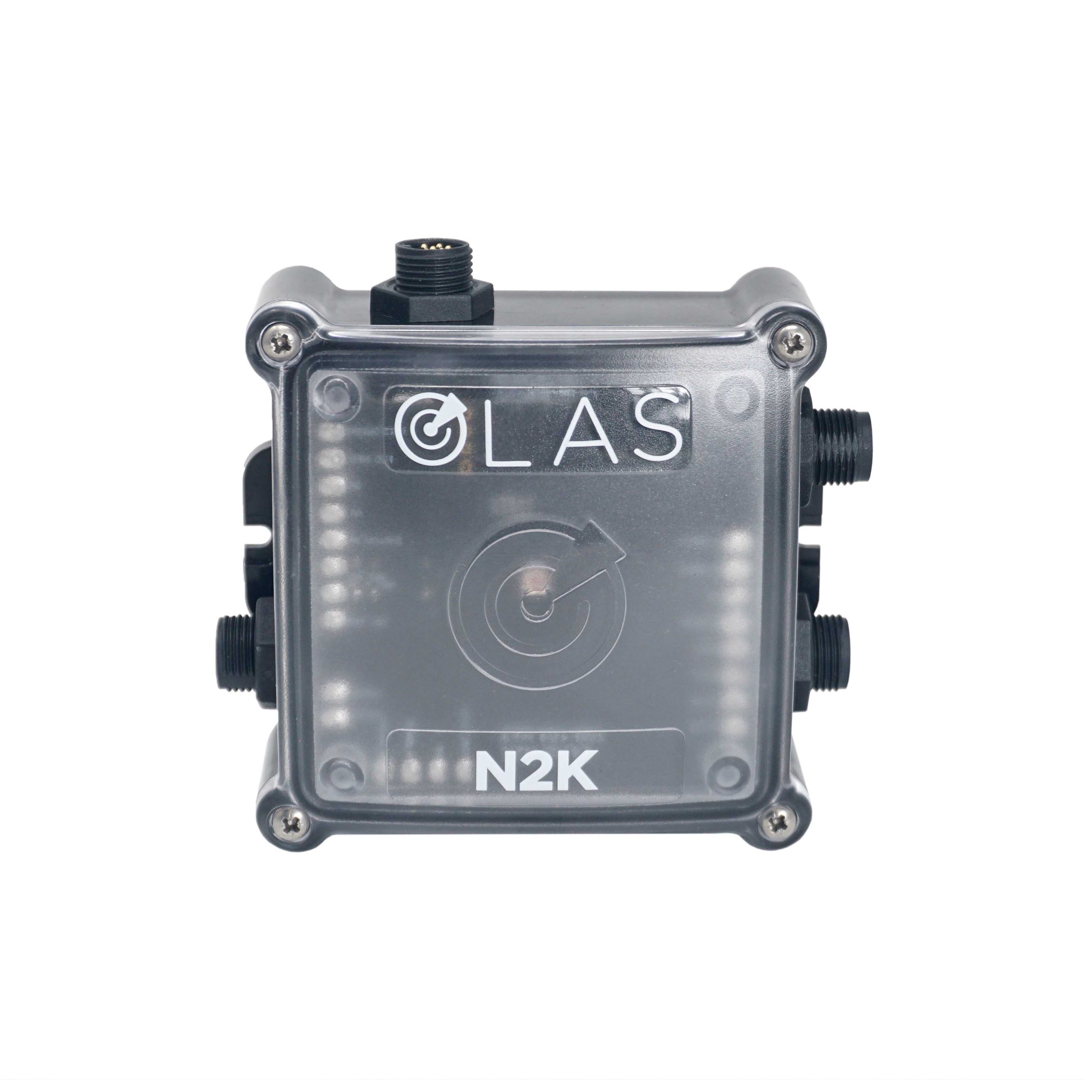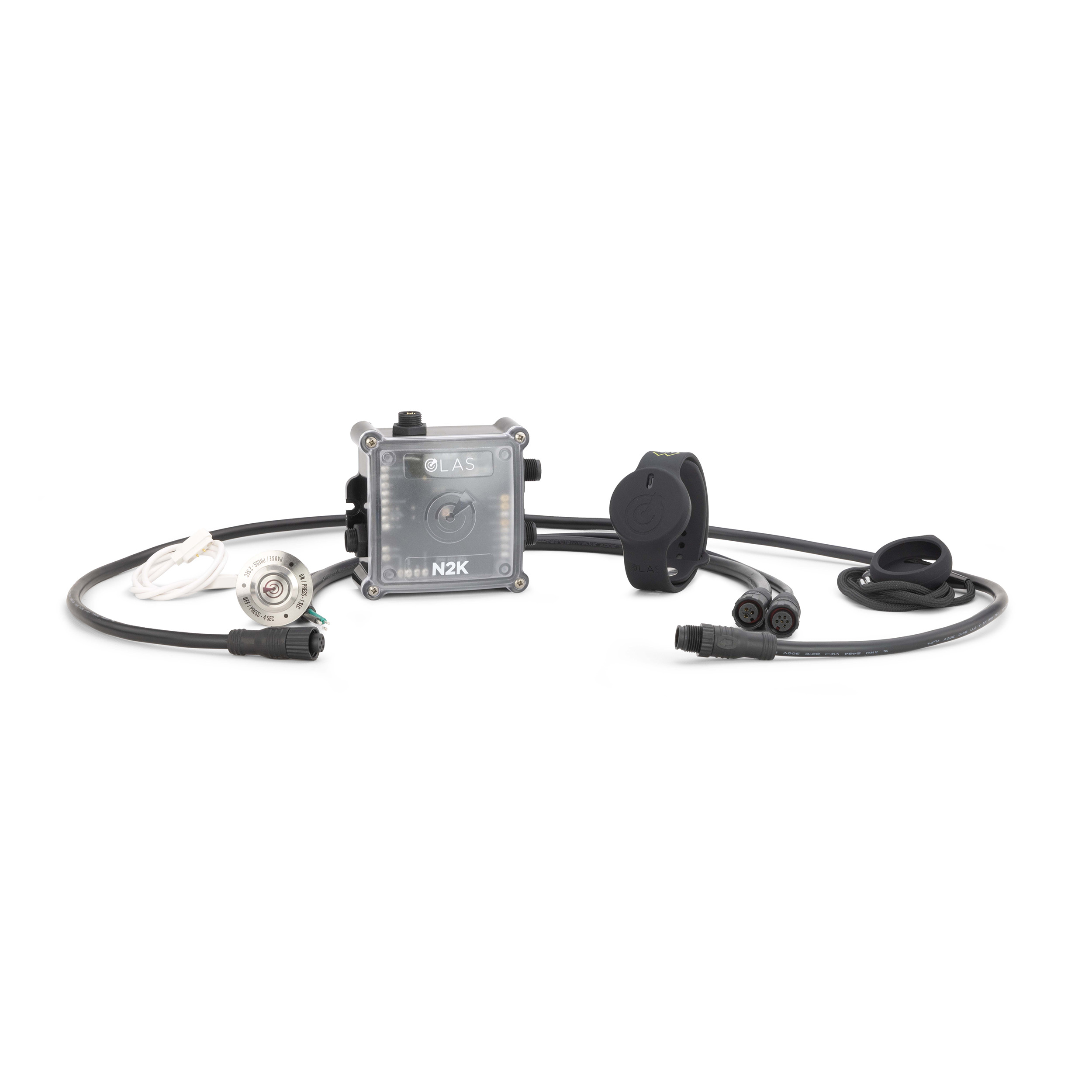PRODUCT DESCRIPTION
Track Multiple Transmitters or Single Tags with Ease
The OLAS N2K operates on a large scale, capable of tracking up to 25 OLAS transmitters around vessels up to 100ft in length. Whether you have a large motor vessel or a sailing vessel, this device has got you covered. Alternatively, it can be used to track a single tag on a motorboat, ensuring that the engine stops immediately if the helm falls overboard.
Supplied with rechargeable OLAS T2 transmitter.
The OLAS T2 is a waterproof, compact, rechargeable OLAS transmitter. Integrated vibration and light indication ensures user friendly awareness of the tag’s status.
- Supplied with wrist strap and neck lanyard
- Vibration low battery alert.
- Over 7 days run time from a single charge.
- 2-hour charge time.
- Engine Smart lock control.
Never Miss a Man Overboard Event
With the OLAS N2K, you can react quickly to a man overboard situation, as it automatically saves the MOB point of loss location onto the plotter. No more relying on human memory or risking forgetfulness. When an OLAS tag is ‘lost’ and presumed overboard, multiple alerts occur simultaneously, providing you with the utmost safety and awareness.
MOB pgn – the Man Overboard (PGN 127233) is issued into the NMEA 2000 network. Any connected MOB device programmed to react to the MOB pgn will be triggered.
AIS Safety Broadcast (PGN 129802) – this alert emulates the message that would be received from an EPIRB or SART devices with AIS VHF support. The message is internal only and will not be transmitted off the vessel. The message includes the GPS location of the vessel at the time when the alert was triggered. The chart plotter can then set the MOB mark.
Wireless Kill Switch for Unparalleled Safety
A wireless kill switch is a vital safety feature on any power boat, and the OLAS N2K delivers exceptional functionality in this regard. Here’s why a wireless kill switch is so beneficial:
- Operator Safety: If the operator falls overboard or is unexpectedly thrown from the boat, the OLAS N2K automatically shuts off the engine, preventing accidents and making it easier for rescue operations.
- Emergency Stop: In dangerous situations like collisions, the wireless kill switch allows for an immediate shutdown of the engine, preventing further damage or harm.
- Crew Protection: Extend the safety benefits to passengers and crew members by equipping them with separate tags that can also stop the engine if necessary.
- Regulatory Compliance: Many boating authorities require the use of kill switches in specific situations. The OLAS N2K ensures compliance with these regulations, avoiding fines or penalties.
Easy Installation and Integration for MOB alerts
Installing the OLAS N2K is a breeze, thanks to its NMEA 2000 connection. It seamlessly integrates into your vessel’s existing NMEA 2000 network, providing a hassle-free setup process. Compatible with a wide range of chart plotters and multifunctional displays, the OLAS N2K ensures that you can easily view and respond to alerts.
Customisable Tag Modes for Flexibility
The OLAS N2K offers three user-selectable tag modes, allowing you to tailor the device to your specific needs. You can switch between modes effortlessly using the OLAS mobile app. Here’s a breakdown of the tag modes:
- Default Mode: Ideal for larger motor vessels and sailing vessels, this mode triggers alerts for the remaining crew while cutting off the engine simultaneously. It ensures that everyone is notified and that the vessel is under control.
- Crew Tag Mode: Recommended for crew and passengers on both motor and sail vessels, this mode alerts the remaining crew without cutting off the engine. It allows for immediate rescue operations.
- Helm Tag Mode: Specifically designed for sub 35ft motor vessels, this mode acts as a kill cord, stopping the vessel when the tag goes beyond a customizable distance from the hub. This mode allows the user to leave and return to the vessel without setting off the alarm. It doesn’t trigger MOB alerts and should not be used as a MOB alarm system.
Powerful OLAS App Features for Added Safety
The OLAS mobile app offers additional features that further enhance your safety on the water:
- Solo Mode: For boaters operating inshore or on vessels with offshore connectivity, the Solo Mode enables automatic SOS messaging. In case of a MOB event, a distress SMS is sent to your pre-entered emergency number, containing essential information about your vessel.
- Track Back and Last Seen Location: The OLAS app generates an easy-to-follow direction arrow and distance record to help rescuers return to the MOB location. The latitude and longitude of the MOB alert are also displayed, enabling effective coordination with rescue services or nearby vessels.
- Automatic VHF Mayday Information: The app automatically generates a VHF script that includes your vessel’s information and the last seen location data. This ensures an accurate Mayday call can be issued over VHF, maximizing your chances of a swift rescue.
In the box: OLAS N2K, NMEA 2000 connection cable (1m), Stainless steel control switch (0.5m), Engine connection lead (0.5m) + 3 x marine connectors, OLAS T2 Tag + USB charger + silicone strap + neck lanyard, User guide.






